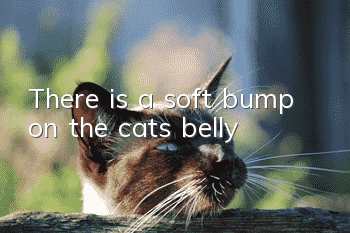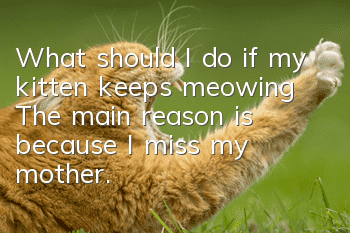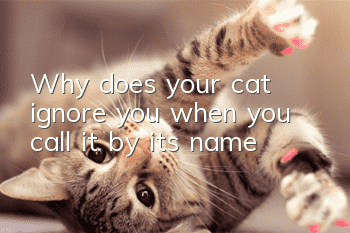How to choose cat food correctly?

A healthy digestive system for cats is the key to longevity, and the most basic requirement for a healthy digestive system is a high-quality diet. In the previous content, it has been said many times that cats are different from other animals. They can be said to be complete carnivores. Their body structure requires high-quality, high-protein food.
·Age
Kittens (2-11 months), their bodies need rich nutrition to maintain health and help their own development. Therefore, the selection of kitten food is based on rich nutrients, such as DHA (fish oil), which can help brain and eye development, and folic acid, which promotes healthy cell growth. Usually in about 4 weeks, the weight will increase 1-3 times.
Adult cats (1-6 years old) and middle-aged cats (7-10 years old) can be based on weight and activity level as the basis for cat food selection.
Elderly cats (over 11 years old) are different from young cats. Their nutritional requirements are mainly to respond to corresponding physical changes. As they age and their bodies change, their demand for nutrients gradually increases. For example, calcium can prevent the aging of bones and joints; vitamins E and C can improve their immune system; and vegetable oils containing omega fatty acids can help hair growth. and skin guaranteed to be smooth and supple.
·Health
When it comes to food allergies, gastrointestinal sensitivities, urinary, hair ball or other health-related problems, it is best to adjust the cat’s diet according to the prescribed food after treatment.
·Weight
Cats that do not like to exercise, are neutered, or have reached middle-aged and old age are very prone to obesity. Gradual weight gain will cause various serious health problems. Therefore, when choosing cat food, you should mainly choose foods with low fat content and high fiber. For cats that are losing weight due to picky eaters, heavy exercise, or stress reactions (and affecting their health), you can replace them with high-protein diets (such as kitten cat food, canned food, etc.)
Nutritional composition of cat food:
· Vitamins
In addition to protein and carbohydrates, a good cat food should also contain the vitamins needed to maintain your cat’s health.
Vitamin A, usually found in the form of beta-carotene, is used for healthy skin, vision and immune system.
Vitamin B, including biotin (B7), riboflavin (B2), and pyridoxine(B6), Niacin (B3) and Thiamine (B1), used to maintain a strong nervous system and most important organs. Thiamine is especially important in cats who are often susceptible to deficiencies.
Folic acid/B9, a water-soluble vitamin, aids digestion and promotes healthy cell growth, which is especially important for kittens and pregnant cats.
Vitamin B12 also contributes to normal cell growth (blood and nerves).
Vitamin C/E/Antioxidants are essential for the resilience of your cat’s immune system.
· Common minerals
Calcium protects the health of your cat’s bones, joints and teeth.
Phosphorus, obtained from the meat your cat eats, is beneficial to healthy teeth and bones, as is calcium.
Iron, an element in mammalian cells that serves as a component of hemoglobin in red blood cells. These cells carry oxygen from the lungs to other parts of the body.
Magnesium is important for various body processes, such as building strong bones, producing energy and regulating blood pressure.
Sodium, maintains normal blood pressure.
Zinc is needed to make the body's proteins and DNA.
·Protein
Generally, the proportion of dry food is 30-50%, which is used for the development of body functions and the provision of energy. Cat food for kittens should not be less than 33%, and cat food for adult cats should not be less than 21%. The higher the proportion, the more suitable it is for cats who are younger and exercise more. As carnivores, cats are more suitable for animal protein, which can be checked in the ingredients.
Note: Generally, the protein content of low-end cat food is less than 28%, and the high-end cat food is between 32% and 42%.
· Fat
Generally, the proportion is 10%-20%. Excessive fat content can easily lead to folliculitis (such as black chin) and cause digestive difficulties for cats.
·Carbohydrates
Considering that cats’ demand for carbohydrates is not particularly high, it is generally around 10-20%. Excessively high proportions can cause cats to suffer from obesity, diabetes or urinary system problems. Especially the emergence of obesity can easily cause problems such as oppression of blood vessels, respiratory tract, and urethra.
· Crude fiber
The main function is to promote digestion (such as inducing vomiting of hair balls, etc.), which is usually maintained at around 3.5%. Cat food that reaches this value can also be called hypoallergenic cat food. Cats' intestines and stomach are more sensitive to crude fiber, especially cats that are prone to diarrhea. Parents need to pay more attention to this value.
Note: If the crude fiber content reaches about 6%, it can basically be included in the range of poisonous cat food.
·Taurine
Taurine can promote and maintain the growth of the cat's retina and is a very important substance. If this content is missing, the cat can easily suffer from night blindness, so the content must be at least 0.1%.
The above are based on the nutrients needed by cats’ body structure. Of course, the most confusing thing on the market is the competition between natural food and commercial food. Advertisements of “what the public says is right, what the mother-in-law says is right” are popping up in endlessly, making novice cat owners confused about cat food. If you encounter obstacles when making a decision, in fact, this is just used by merchants to promote their products. The most essential difference between them lies in the proportion of formula materials and nutritional analysis on the back (or side) of the product packaging. After comparing the two, you will definitely be able to find cat food that is suitable for your cat.
Cat food purchase examples:
1. Proportion of meat in cat food formula
Cats are carnivores. Only by absorbing animal protein can they meet their most basic nutritional needs. Therefore, meat is definitely ranked first in the cat’s diet. · Cat food A❤️
You can see that in the ingredient list of cat food A, the top five ingredients are all fish, and there are many types of fish in it. The protein content is as high as 42%, making it a nutritionally sufficient cat food.
· Cat food B💔
For example, cat food B is the so-called commercial food. Its top five ingredients are poultry by-products, corn, wheat flour, wheat, and soybeans. The ingredients are obviously lower than cat food A. Although the protein content reaches 34%, they are all It is a vegetable protein and is not good for cats.
Note: Meat meal (including fish meal) is different from meat. Not only is the source of the material unknown (it is even more unprofitable if it is "leftovers"), but the nutrients have already been lost during the secondary processing.
2. Addition of harmful ingredients such as preservatives
A review website from the United States once mentioned "Avoid listing ingredients containing BHA, BHT, ethoxyquin, caramel color, sodium nitrite and menadione.""food", so for safety reasons, it is not recommended that you include it in the selection.
Note: BHA and BHT can also cause cancer or tumors in humans.
· Cat food C💔
It can be seen that the raw materials of cat food C not only contain BHA/BHT ingredients, but the meat used also contains secondary processed meat powder and plant protein. Not only that, the word "flavor" also attracted the editor's attention. Although this ingredient can attract cats to eat, it is indeed a burden to their health.
3. Fat types
Unlike protein, whether it is animal fat or vegetable fat, it can properly supplement the energy needed by the cat's body and make the hair smooth and shiny. But for this reason, we need to know more clearly which animal (plant) the fat comes from. If it is just marked with words such as animal fat or refined fat with unclear meaning, it is best to think carefully.
Warm Tips:
When purchasing cat food, you must choose a regular sales point, such as a pet store, pet hospital, etc. Generally, the nutritional content of cat food will be on the back or side of the package. Branded cat food will basically have a moisture-proof bag built in. You must be sure to do so when purchasing. Please pay attention.
Attachment:
Dry/wet food/lyophilized comparison
This content is from the American Reviews.com website. They have collected wet and dry cat foods on the market (more than 2,400 types) through the "complete and balanced" certification of the Association of American Feed Control Officials (AAFCO) and consulted the recommendations of nutritional experts. Review.
Dry food
Wet food/freeze-dried
- How to treat ringworm in cats
- How big can an adult Ragdoll cat grow?
- Can cats eat pork?
- What does it mean when a cat wags its tail?
- What should you pay attention to when raising a cat at home?
- How often should you deworm your cat? Do you really know!
- How do you tell how old a Norwegian forest cat is?
- What is the IQ of Siamese cats?
- Why does my cat keep vomiting brown vomit?
- Can chicken breast be fed to cats every day?



